Two-half hitches are more secure than a single-half hitch. You create two half hitches by adding a second half hitch to a single one. Two-half hitches are quick to tie, adjustable, and secure. They are an excellent option for securing an object to a pole, post, or tree.
Two-half hitches are most often used in boating because they can securely moor boats. They are great for other outdoor uses like dragging logs, fishing, and camping. They are even popular in decorative macrame crafts.
Follow the simple instructions below to learn how to tie two half-hitches.
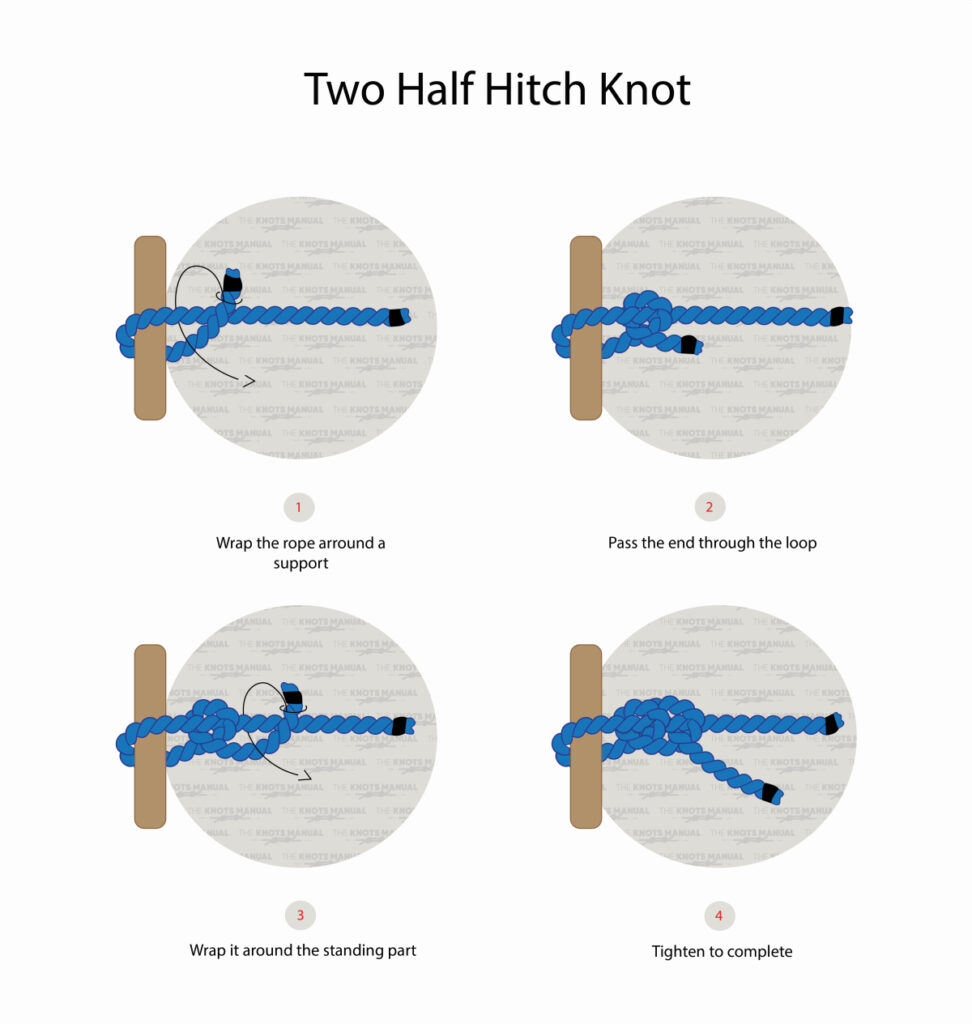
What Are Two Half Hitches?
The two-half hitch knot, or double-hitch knot, is an overhand knot created with a half hitch. Boaters most often use them for mooring, but you can also use them for other general purposes. Two-half hitches are excellent for securing a rope to a tree, post, or dock.
Two-half hitches can be challenging to untie, and you’ll need to bend them apart to untie them. Still, they have a non-jamming release, you can tie them quickly, and they are adjustable.
Two-half hitches are more secure than a lone half hitch. The more tightly you tie the knots, the more secure they will be.
It’s easy to capsize the knot if you tie it incorrectly or misuse the knot. Capsizing means the knot has deformed into a different structure. A two-half hitch knot capsizes into a granny knot, one of the most insecure knots you can use.
According to the Ashley Book of Knots, the two-half-hitch knot was invented in 1794 by a man named Steel.
How To Tie Two-Half Hitches
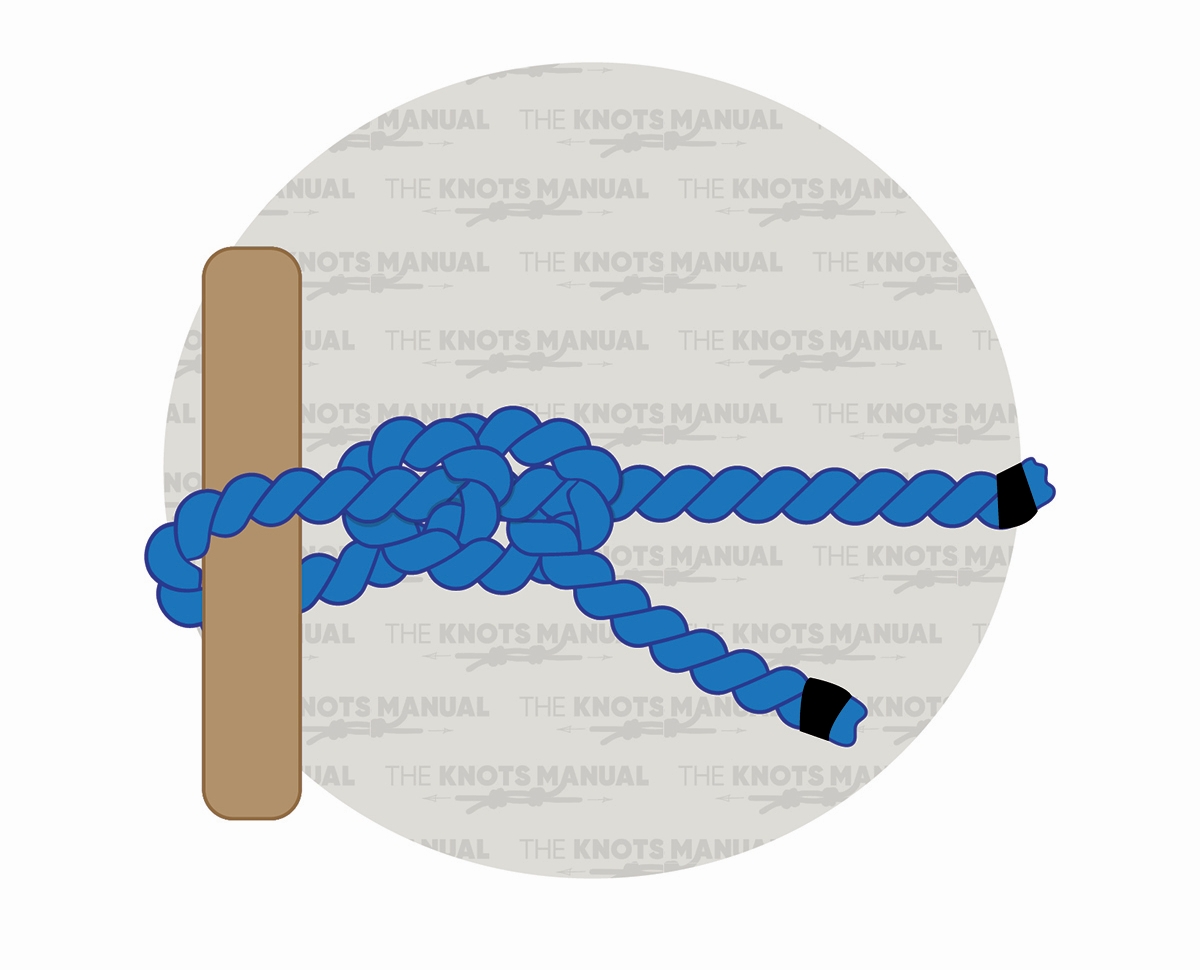
Follow these steps to tie two half hitches:
Step 1:
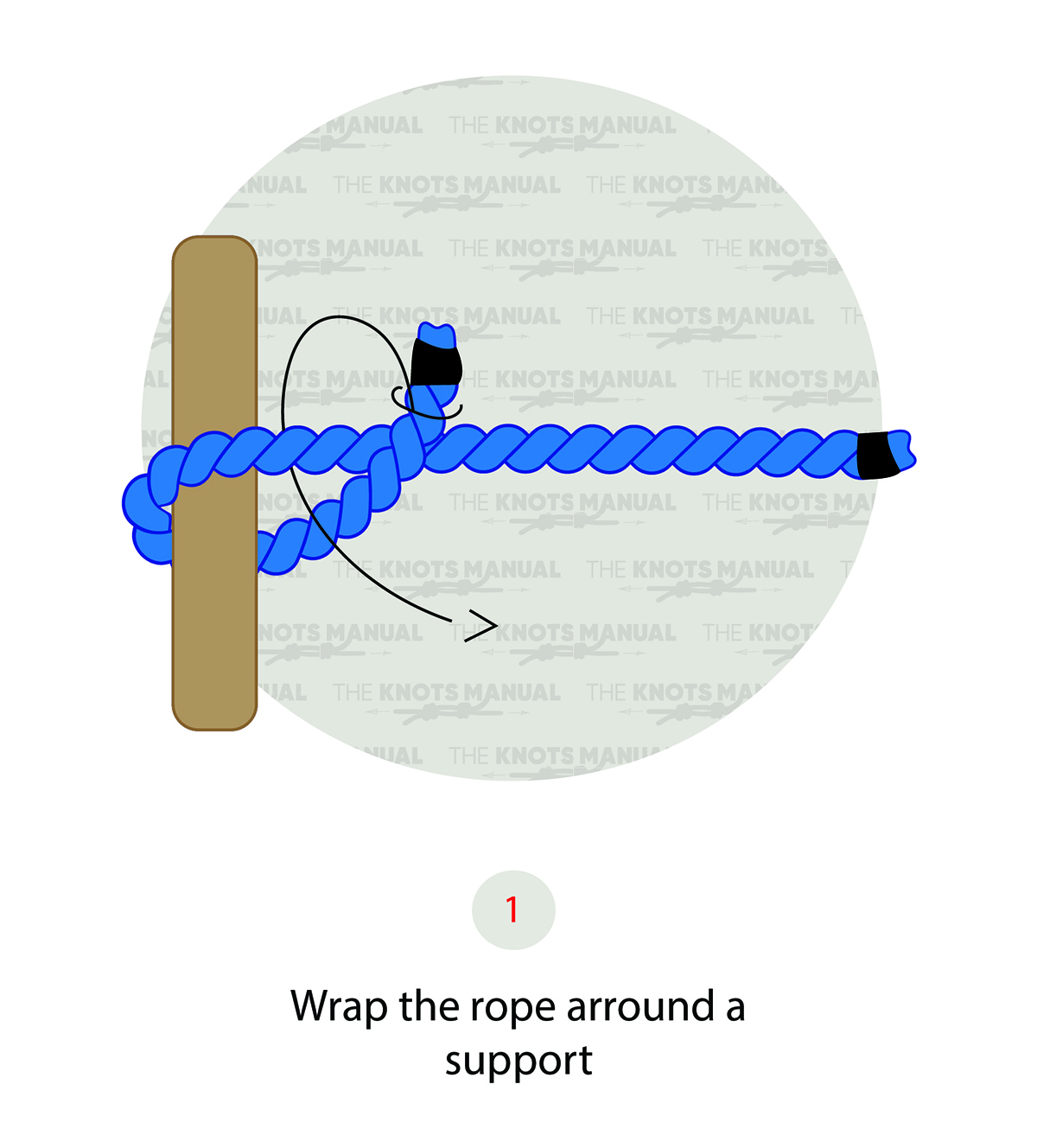
Wrap the rope’s working end around support, like a pole or a post.
Step 2:
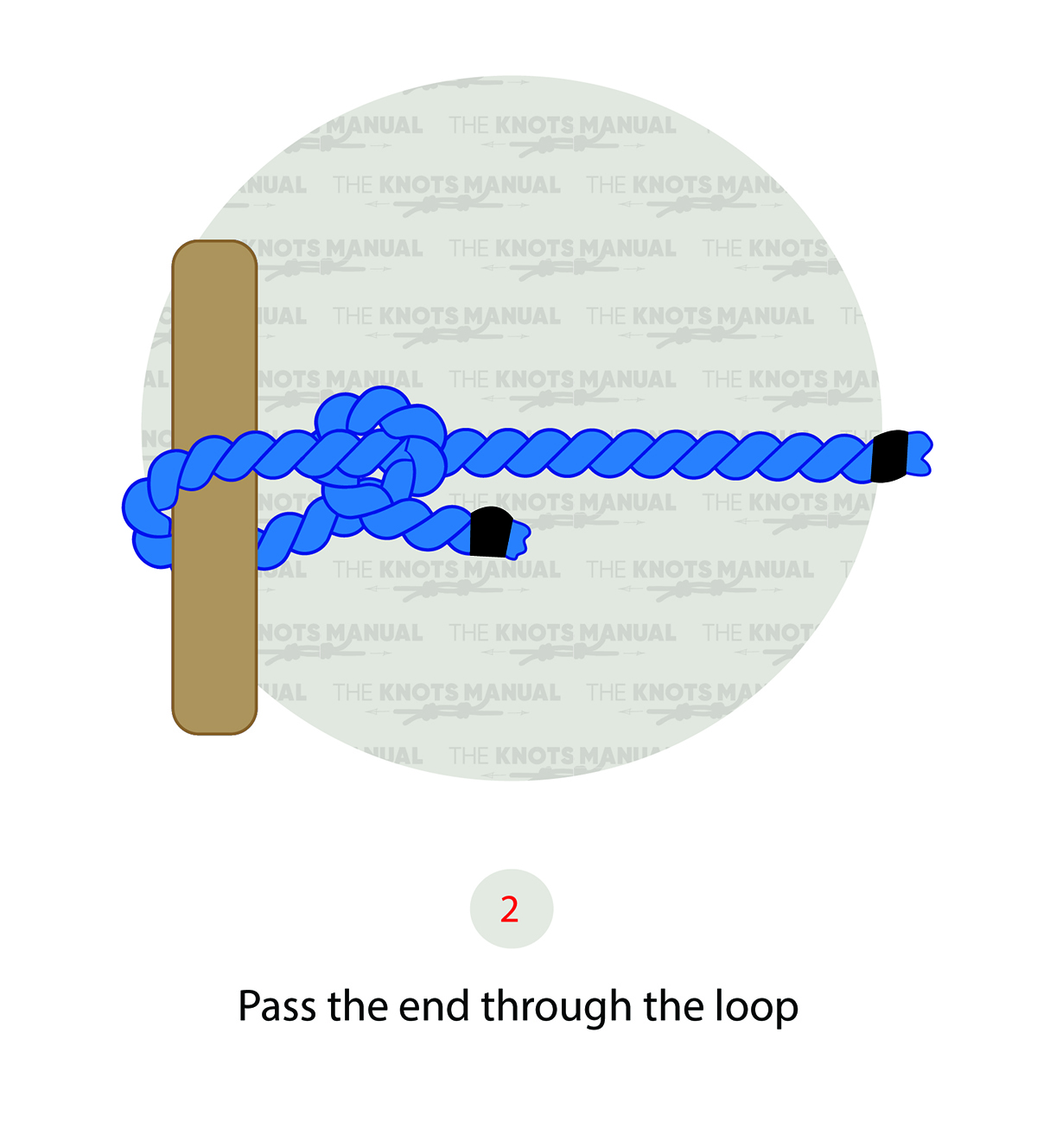
Pass the working end over the top of the standing end.
Step 3:
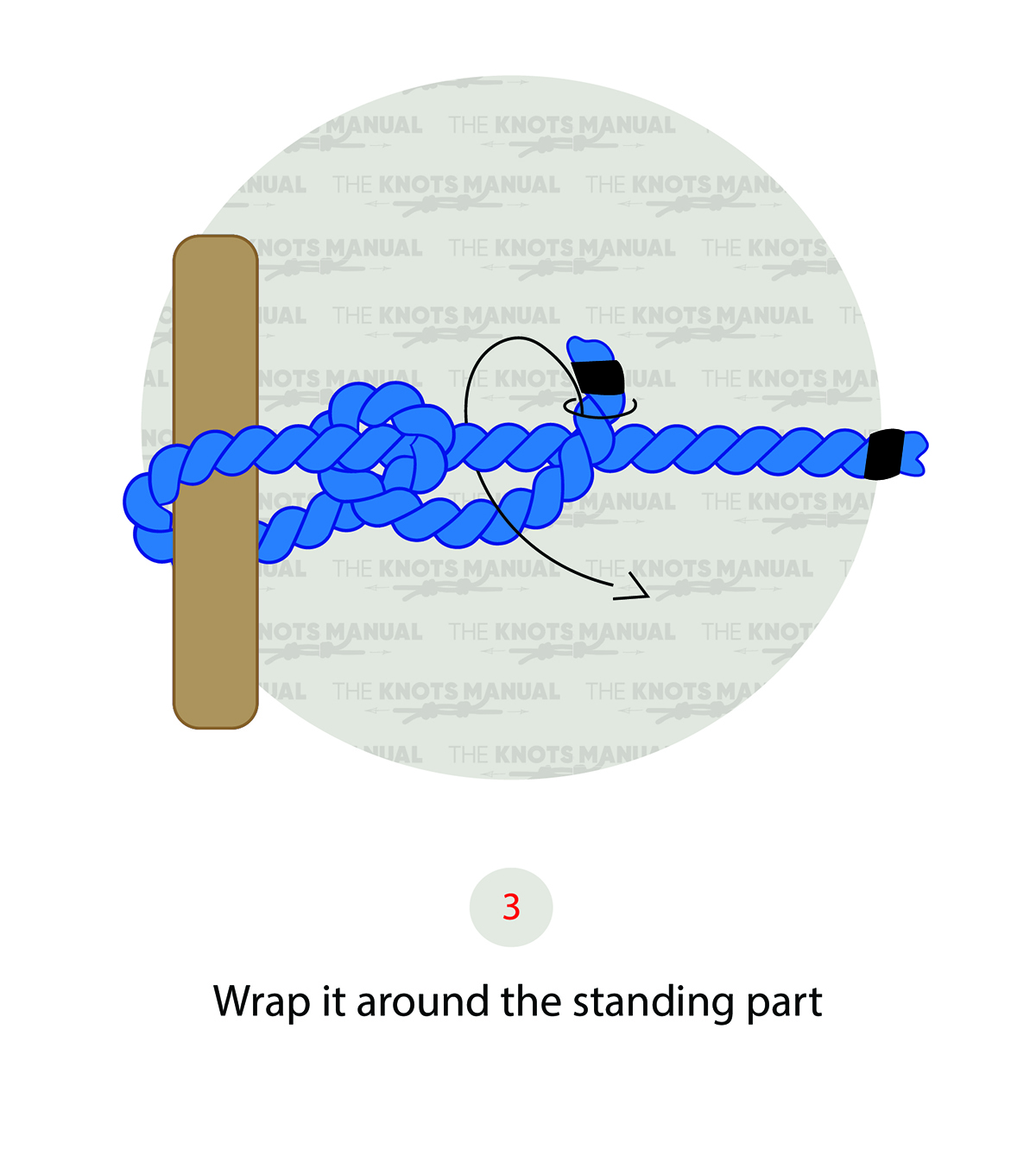
Pass the working end through the loop and pull tight to create a half hitch.
Step 4:
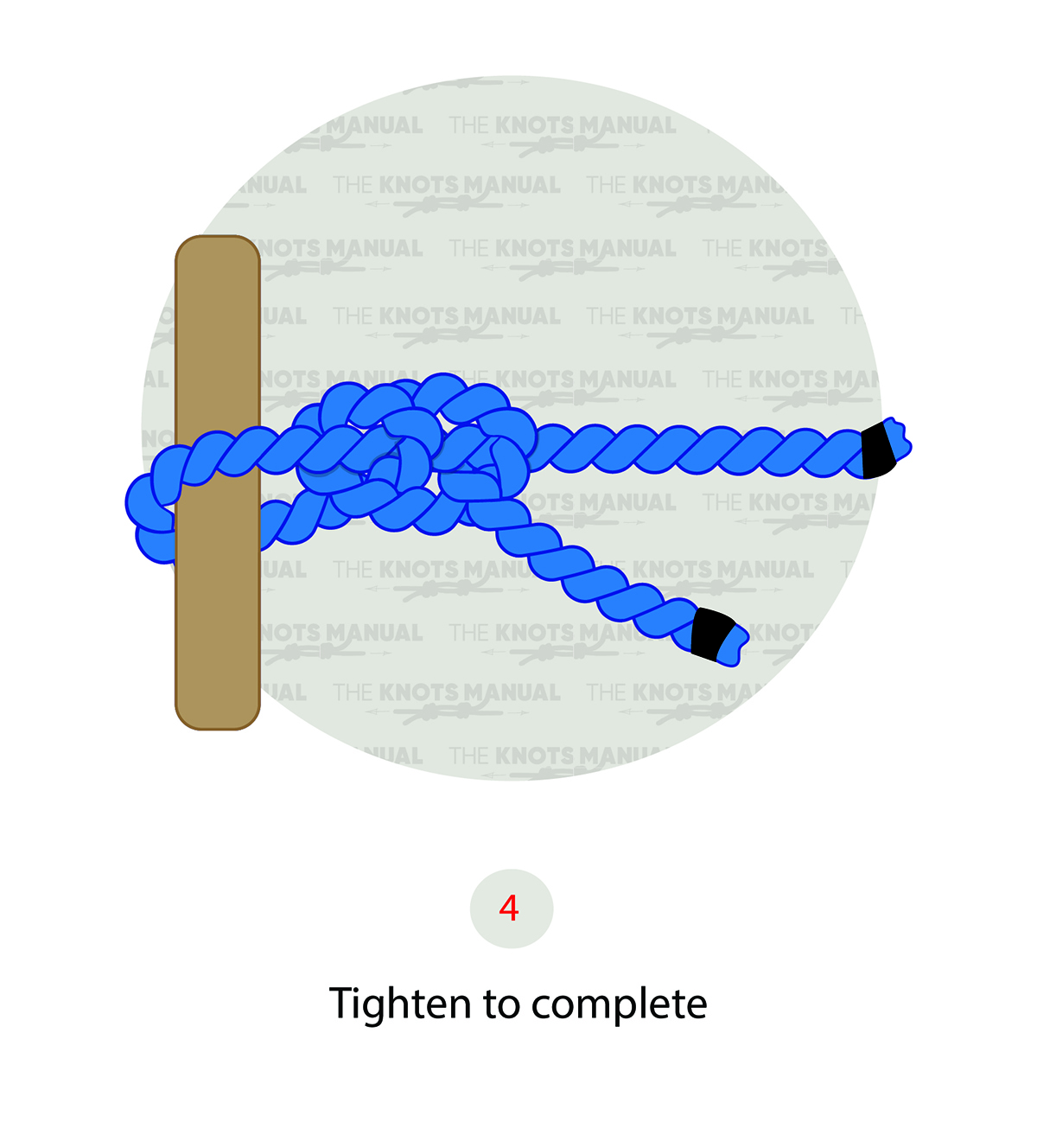
Pass the working end through the second loop and pull tight to create a second-half hitch.
It is also possible to tie two half hitches using a bight rather than the rope’s working end. It’s helpful to do this when you have an excess of rope that may get in the way otherwise.
Two-Half Hitch Knot Uses
Boaters most commonly use two-half hitches. Still, they’re useful for other outdoor tasks and even crafting.
Boating
Double-half hitches are usually used for mooring boats. They are secure and adjustable, making them a suitable option for use on a boat.
Camping
Double-half hitches are secure when tied correctly. So, they are popular for many uses while camping:
- Tying guy lines to dining flies
- Securing the ties on the rack of a car
- To set up tents in combination with a taut line hitch
- Boy Scouts
Macrame
Half hitches are common knots used in macrame, a decorative art using ropes. Double-half hitches are also popular in weaving patterns.
Besides the half hitch, macrame designers use these variations:
- Two half hitches
- Round turn & two half hitches
- Slipped double half hitch
- Vertical double half hitch
- Horizontal double half hitch
- Diagonal double half hitch
- Reverse double half hitch
Other Uses
Double-half hitches are helpful for other tasks as well:
- Moving large objects, like logs
- Stringing tennis rackets
- Fly tying for fishing
- Cattle handling
Knots Similar To The Two Half Hitch
Round Turn & Two Half Hitches: These knots are easier to tie than the double half hitch. One hand holds the load with the “round turn” while the other completes the knot. These knots are also more secure than two-half hitches alone. Their extra security makes them better for mooring and posts with smaller diameters. They are also easier to untie than traditional two-half hitches.
Two or more Half Hitches: You don’t have to stop with just two half hitches. To make the knot more secure, you can add more hitches to the knot.
Clove Hitch: The clove knots tie directly to the support rather. They don’t make a turn around the support like the double half hitch.
Slipped Double Half Hitch: To create this knot, you will pass a bight through the second half hitch. You’ll do this rather than passing the working end of the hitch. These knots are easier to untie than traditional two-half hitches.
Buntline Hitch: These knots are slightly different from the double half hitch. In buntline hitches, the second-half hitch is tied inside the first one. In the double half hitch, the second half hitch is tied outside the first one. Buntline hitches are more secure than double-half hitches, but they are more likely to jam.
FAQs
What Is The Difference Between A Knot & A Hitch?
A knot is any combination of loops or twists tied onto a rope. All hitches are a type of knot, but not all knots are hitches. You must secure a hitch around another object, such as a post, tree, carabiner, or rope.
Do Knots Reduce The Strength Of A Rope?
Yes, knots significantly reduce the overall strength of a rope. The breaking strength is the total load a rope can handle before it’s expected to break. Adding knots to your rope reduces the breaking strength by as much as 50%. Of course, using knots is essential. So, you need to account for the weakness they add to your rope to keep yourself safe.
